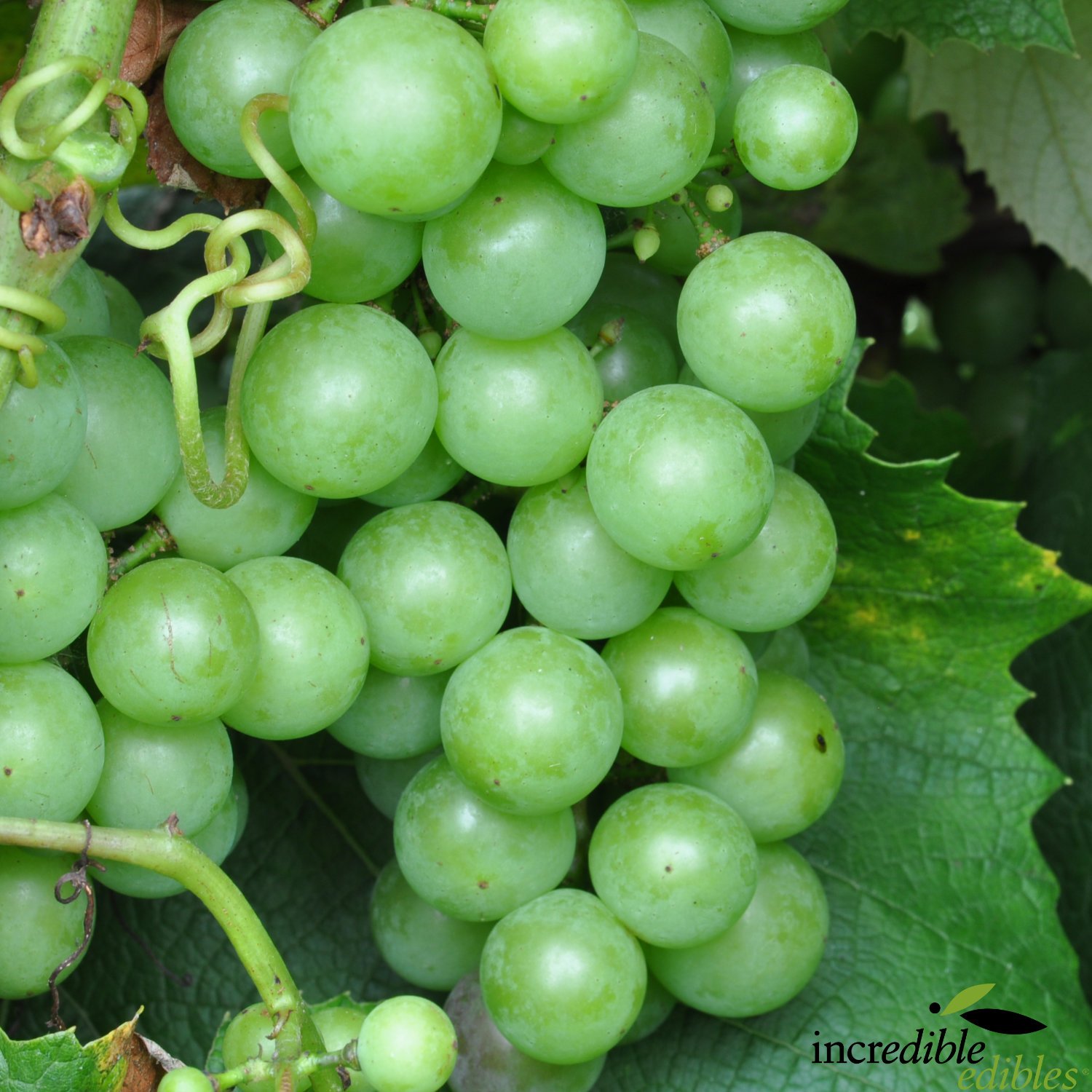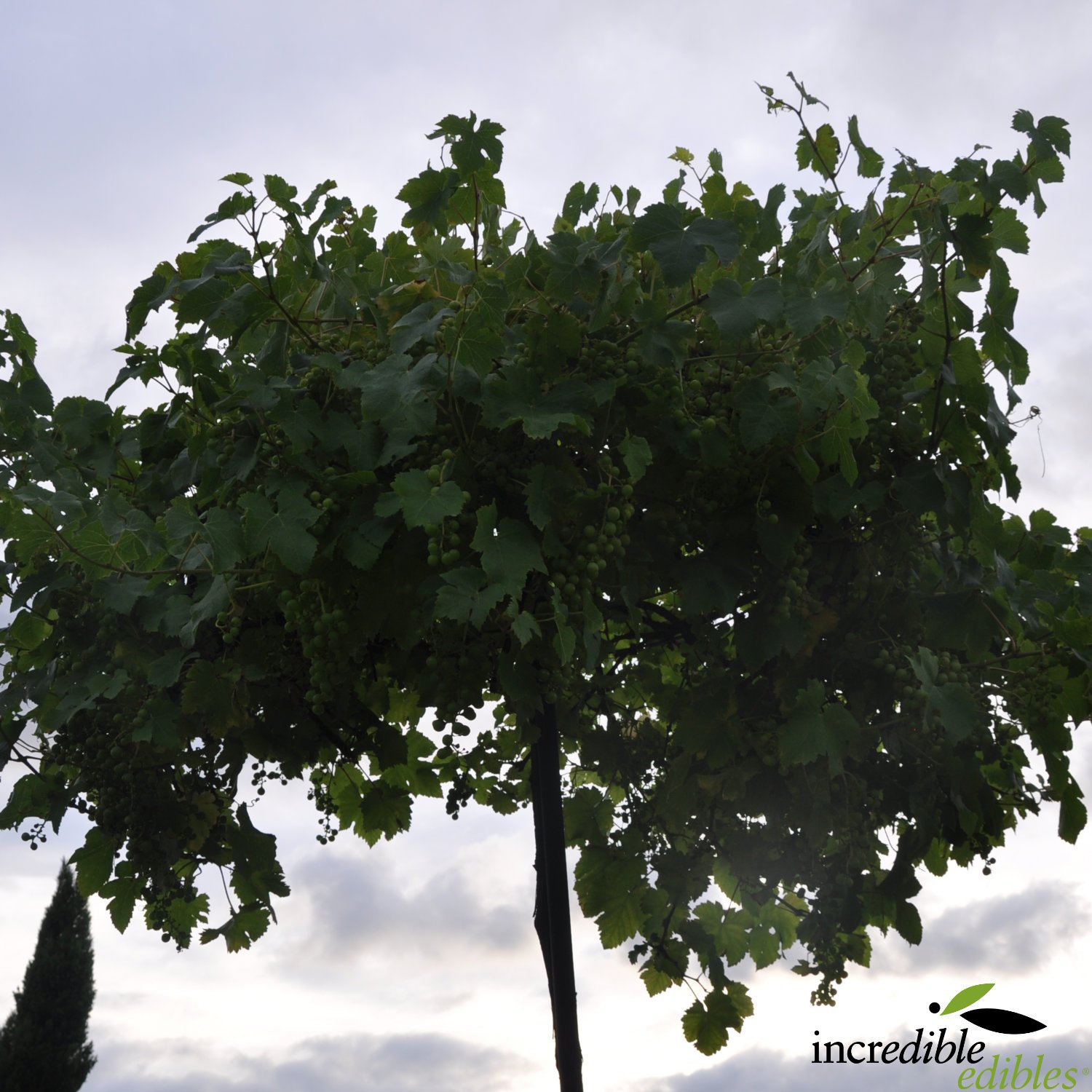 Image 1 of 4
Image 1 of 4

 Image 2 of 4
Image 2 of 4

 Image 3 of 4
Image 3 of 4

 Image 4 of 4
Image 4 of 4





Grape Niagara
Grape Niagara is one of the most popular varieties of grapes. Bunches of delicious, sweet, mild white table grape with a thin skin and a low seed count. Large juicy oval fruit with large deeply lobed leaves, moderately fast-growing and hardy. Bunches of small green flowers are borne on current season's growth. Adverse conditions at the time of flowering (cold and wind) can result in low fruit numbers or dropped fruit. Harvest is early season (Late February to mid-March).
Pruning table grapes is a vital practice that helps maintain the vine's health, productivity, and structure. Here are some key steps to effectively prune table grapes:
Prune during the dormant season, typically in late winter or early spring, before new growth begins. This allows you to assess the vine's structure and make precise pruning decisions.
Remove any dead, diseased or damaged wood back to the main stem.
Select the main canes that are well-spaced and secure along supporting wires.
Prune lateral shoots back to main canes. Depending on the area to grow, choose about ten lateral buds. These will produce the fruiting canes for the upcoming season.
Remove unwanted canes that may crowd the vine. Essential to keep the structure open and balanced.
Keep the area around your plants clean and tidy. Mulch the base of the vine to conserve moisture and suppress weeds.
Remove excess growth from lateral canes once the grapes are close to ripening in summer. Remove leaves from around grape bunches so the sun can penetrate the vine to help them ripen.
Spraying with a copper spray in winter and from bud burst, in addition to summer pruning (to allow good airflow), will help minimise the risk of fungal diseases (Powdery and Downey mildew).
Interesting tip; make a rose pillar inside a half wine barrel using wood support so the pillar remains centre and firm. Fill the wine barrel with potting mix and plant your favourite grape. Tie your plant to the centre pillar until it reaches the top. Pinch out the top and encourage laterals to grow around the framework. Feed twice a year with general NPK fertiliser. Water well over fruiting time. Prune back at the end of winter before bud burst.
Vitus ‘Niagara’
Grape Niagara is one of the most popular varieties of grapes. Bunches of delicious, sweet, mild white table grape with a thin skin and a low seed count. Large juicy oval fruit with large deeply lobed leaves, moderately fast-growing and hardy. Bunches of small green flowers are borne on current season's growth. Adverse conditions at the time of flowering (cold and wind) can result in low fruit numbers or dropped fruit. Harvest is early season (Late February to mid-March).
Pruning table grapes is a vital practice that helps maintain the vine's health, productivity, and structure. Here are some key steps to effectively prune table grapes:
Prune during the dormant season, typically in late winter or early spring, before new growth begins. This allows you to assess the vine's structure and make precise pruning decisions.
Remove any dead, diseased or damaged wood back to the main stem.
Select the main canes that are well-spaced and secure along supporting wires.
Prune lateral shoots back to main canes. Depending on the area to grow, choose about ten lateral buds. These will produce the fruiting canes for the upcoming season.
Remove unwanted canes that may crowd the vine. Essential to keep the structure open and balanced.
Keep the area around your plants clean and tidy. Mulch the base of the vine to conserve moisture and suppress weeds.
Remove excess growth from lateral canes once the grapes are close to ripening in summer. Remove leaves from around grape bunches so the sun can penetrate the vine to help them ripen.
Spraying with a copper spray in winter and from bud burst, in addition to summer pruning (to allow good airflow), will help minimise the risk of fungal diseases (Powdery and Downey mildew).
Interesting tip; make a rose pillar inside a half wine barrel using wood support so the pillar remains centre and firm. Fill the wine barrel with potting mix and plant your favourite grape. Tie your plant to the centre pillar until it reaches the top. Pinch out the top and encourage laterals to grow around the framework. Feed twice a year with general NPK fertiliser. Water well over fruiting time. Prune back at the end of winter before bud burst.
Vitus ‘Niagara’

